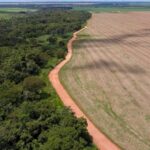From rainforests to paper and textile: An introduction

This introduction is part of Aidenvironment’s project “Corporate Transformation in Indonesia’s Pulp and Paper Sector” that aims to stimulate the sustainable transformation of key pulp and paper companies through monitoring, research, and engagement. We will launch the project website on February 24, 2021 for more information on the project.
Indonesia is among the world’s largest paper producers. The industry is expanding, and tropical rainforests are being converted into industrial tree plantations. Fast-growing industrial trees, such as eucalyptus and acacia, are the key raw material of the Indonesian pulp and paper industry.
To get paper, pulp is first produced from harvested industrial trees. Most pulp goes to the paper industry, some to clothing, as viscose is also manufactured from pulp.
Paper has a large variety of uses. Paper made from recycled materials is the environmentally sound option. Cardboard and newspapers usually have large recycled content. The majority of virgin pulp is used to create other packaging products, printing/writing paper and personal hygiene products, increasing pressure on the remaining tropical rain forests.
The products of the Indonesian industry are mainly sold in Asian markets, so the likelihood that tropical rainforests have been cut down for your paper product is higher in this region.
The flowchart below provides a simplified overview of the various processes and products.




